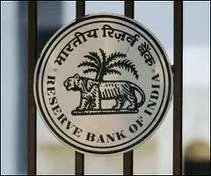It is mightily pleasing to watch the scrips of the State Bank of India and other Indian banks trading at a PE multiple of around 20, that too, at a time when the shares of their counterparts in Europe are trading at a discount to their book value. Isn’t it amazing to watch the turnover of SBI surpassing that of the mighty ONGC, the behemoth that is engaged both in down and up stream segments of oil industry? Doesn’t all this speak about the confidence reposed by the market on the Indian banking system?
The mandarins of Indian banks and their regulator, the Reserve Bank of India, rightfully deserve a pat on their back from the nation as a whole for keeping our financial system spick-and-span, while the western banking system is struggling to limp back from the cataclysm triggered by the collapse of Lehman Brothers. Of course, it is time now for banks and their regulator not to get carried away by their past performance—which has already become history—but to brace for the capital standards being proposed by international agencies and equip themselves with more wherewithal to meet the aspirations of the nation for inclusive growth.
The Basel Committee on Banking Supervision, of which India is a newly inducted member, has come up with new capital norms that will have consistency in the definition of capital across various jurisdictions, duly accompanied by an appropriate disclosure norm that makes the capital base transparent with the sole objective of insulating banks—whose correction, unlike at the time of the Great Depression of the 1930s, no longer remains national in scope and can be rebuilt without seeking international consensus—from adverse shocks. According to it, banks are required to maintain their Tier I capital—equity plus disclosed reserves— at 4.5% of risk-weighted assets by January 2015 plus a capital conservation buffer of 2.5% to withstand future periods of stress. In addition to that, banks have to also maintain a countercyclical buffer in the range of 0-2.5% of common equity to be imposed to protect the banking sector from periods of excess aggregate credit growth. Further, these are to be supplemented by a simple, transparent, non-risk-based leverage ratio that will serve as a backstop to the risk-based measures and higher capital norms for systemically important financial institutions.
Per se, these measures appear to be sound enough to risk-proof banks. But the big question is: Could regulators be that proactive in making banks subject to these requirements? At least that is what one wonders looking at the history of supervision, particularly, in the western markets. Coming to our banking system, it is encouraging to note that our Tier I capital already stood at 9.3% as on June 30, 2010. Nonetheless, implementation of these regulations is sure to challenge the existing infrastructure: How to operationalize the concept of countercyclical provisions?
With the kind of economic and financial data at its disposal, how could the RBI predict and identify business cycles in real time? How to maintain credit/GDP ratio while simultaneously meeting the demands for increased credit from the growing economy and the deepening financial inclusion? That said, let us not forget to learn from economic history—of what has happened since 2008 globally and domestically—else we would be accused of, in the words of Kenneth Rogoff and Carmen Reinhart, learning nothing from the past economic crises. No doubt, hitherto, our conservatism has paid dividends, but it also means missing out on beneficial innovations. So, the challenge to the RBI would be to let the banks capitalize on beneficial innovations, while ensuring that none took the system for a ride. In the ultimate analysis, what matters most to the regulator while dealing with unknown unknowns and making the banking system function well is to obtain every technical input that is essential to arrive at a decision, but finally superimpose their personal judgmental call over it in arriving at policy decisions.
- GRK Murty

No comments:
Post a Comment